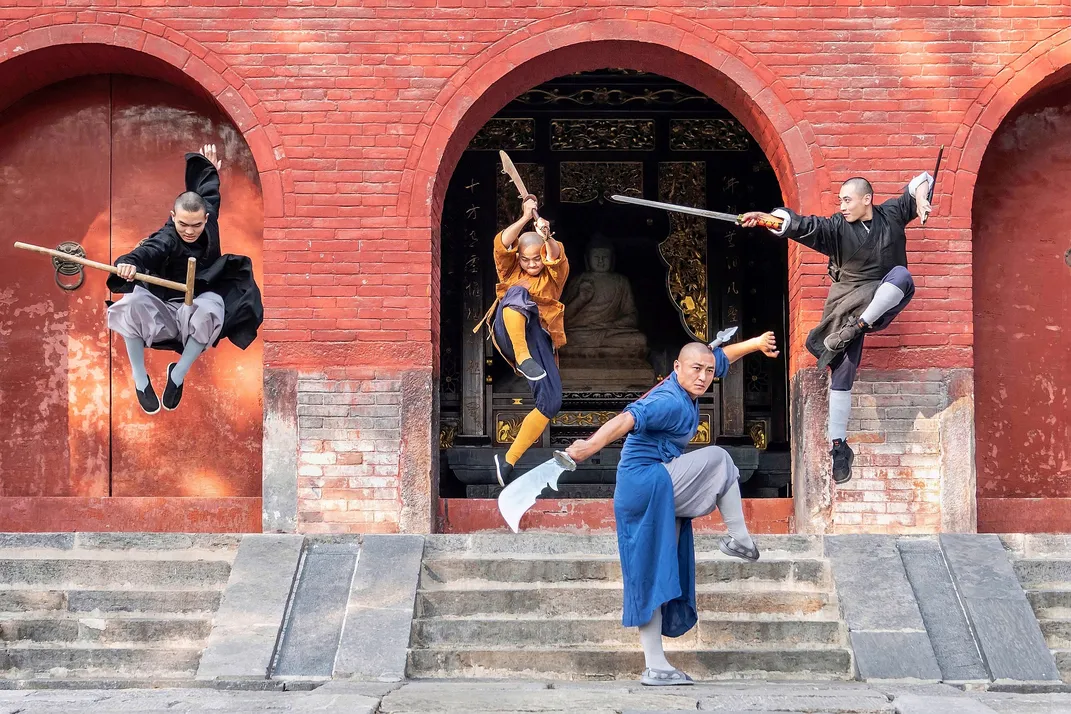Non Western Art Exhibit – Wushu an Art that Spans History
Non Western Art Exhibit – Wushu an Art that Spans History
Introduction
When deciding what to highlight for this week’s installment, there was a wide range of subjects and styles that jumped out at me. With the vast flexibility of the instructions, it was difficult to narrow my topic down to just one influence. I was lost like a child in a candy store, but in my case the delicious treats were awe inspiring works of art. Even though I finally landed on just one theme, I’m most certainly glad for the process, because it opened my eyes to many different styles that I wasn’t familiar with. I will definitely be looking at more of these artists' works going forward.
However, as I touched on above, there can only be a singular subject matter for this post. So, without further ado let me introduce you all to the art of Wushu, more commonly known as Kungfu. Well Vaughan, Kungfu isn’t a form of art, you might say. This is a fair criticism, but in fact Wushu is indeed a style of art. Not only does it fall under the “martial arts” umbrella, but there exists a rich and generation spanning artistic genre related to this subject. This sub section of Kungfu art is what I will be focusing on in today’s installment. It is a wonderful thing to be able to watch a style evolve across time while staying true to its roots as is the case here. This essence is something I hope to capture and share with you all over these next fantastic works. I’ll start, with a personal favorite of mine, Little Eagle.
Little Eagle
As I’ve shown regularly throughout my posts, I love the chance to display art from the world of literature. Today I will be going that route again with a childhood favorite of mine, Little Eagle. First published in 2006, this amazing book wrote by Chen Jiang Hong depicts the journey of a young orphan on his quest to learn eagle boxing (a form of Kungfu).
The snapshot I will be presenting from this work is the title art. Mutiple factors instantly jump out at me right away when I look over this drawing. First and foremost, I’m instantly greeted with a plethora of positive emotions. I remember being read this book as a child and absolutely loving both the detailed art and amazing story. Even now a sense of awe radiates from the page and draws me into the work. Everything from the stark red background to the subject’s detailed garb culminates in a truly iconic scene. Even the coloring of the title’s font adds additional depth for me. All in all, this is an excellent gateway into an equally amazing story, along with excellent traditional Chinese illustrations. Please treat yourself and find a copy of this splendid work. It is currently available through our great Alaska Library system.
Banquet at a Frontier Fortress
Next, I will be looking at an older work, Banquet at a Frontier Fortress. “This work, created by artist Qui Ying during the early 16th century is now housed in the Beijing Forbidden City Museum” (YCGF). This piece shows a martial arts competition taking place as a crowd of people look on.
Instantly the detail throughout the canvas really brings the work to life. This can be seen in a multitude of formats across the painting from the impressive embroidery on the rugs to the flawless appearance of every character. Mr. Ying also captures the feeling of a gathered crowd incredibly well. With every eye trained on the combatants and a baited feeling almost visible in the air it was as if I was there in person. This results in a spectacular piece that I would love to be able to see one day.
Shaolin Temple Mural
The next piece of art I will be looking at today is the Mural at Shaolin Temple. Although unknown when exactly this was created or who painted it, it is known that “this monument was painted around 100 AD in memory of the Shaolin warrior monks” (Miratico).
My favorite part about this amazing mural isn’t the horde of battling monks (surprising I know), but the excellent usage of depth. The temple stretches back almost into infinity and is just so impressive to me. Of course, the wild fighting is another critical component that makes this work stand out. The scale of the conflict, along with the uniqueness and beauty of the temple combine to form a truly masterful work.
Conclusion
In conclusion, and to come full circle, I’ll close this final blog like I opened the very first one, with a piece pulled from the Smithsonian Magazine. This photo, taken in 2023, shows the modern-day Shaolin Monks and their eight hundred years of Kungfu Mastery. Thanks for reading!
Sources







Hi Vaughan,
ReplyDeleteI really enjoyed your blog post on non-western art. It's important to recognize and appreciate the diversity and richness of artistic traditions beyond the Western canon. I completely agree that non-western art offers unique perspectives and insights that broaden our understanding of the world. Your post has inspired me to seek out more non-western art and explore different cultural expressions. Thank you for shedding light on this important subject!